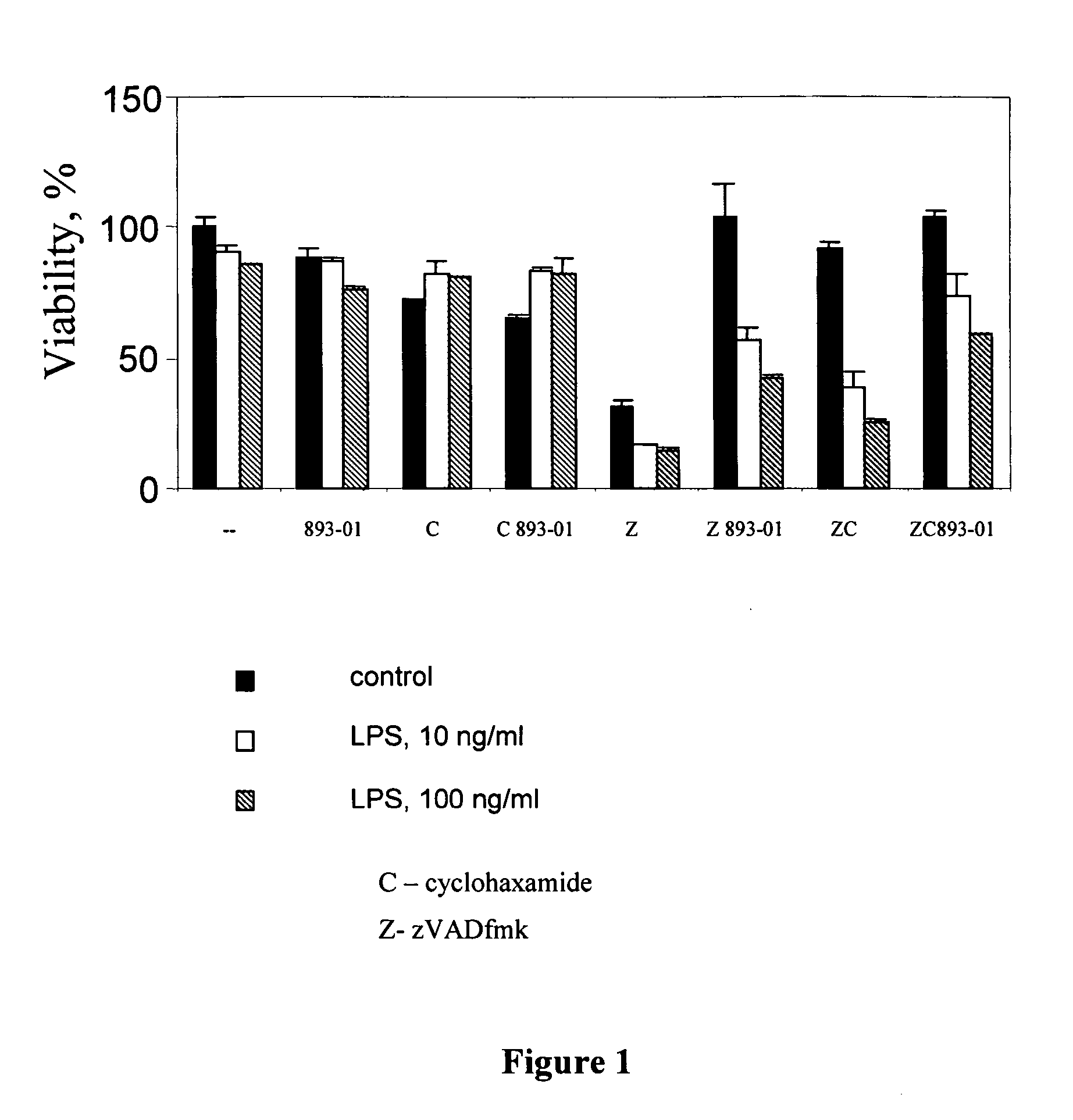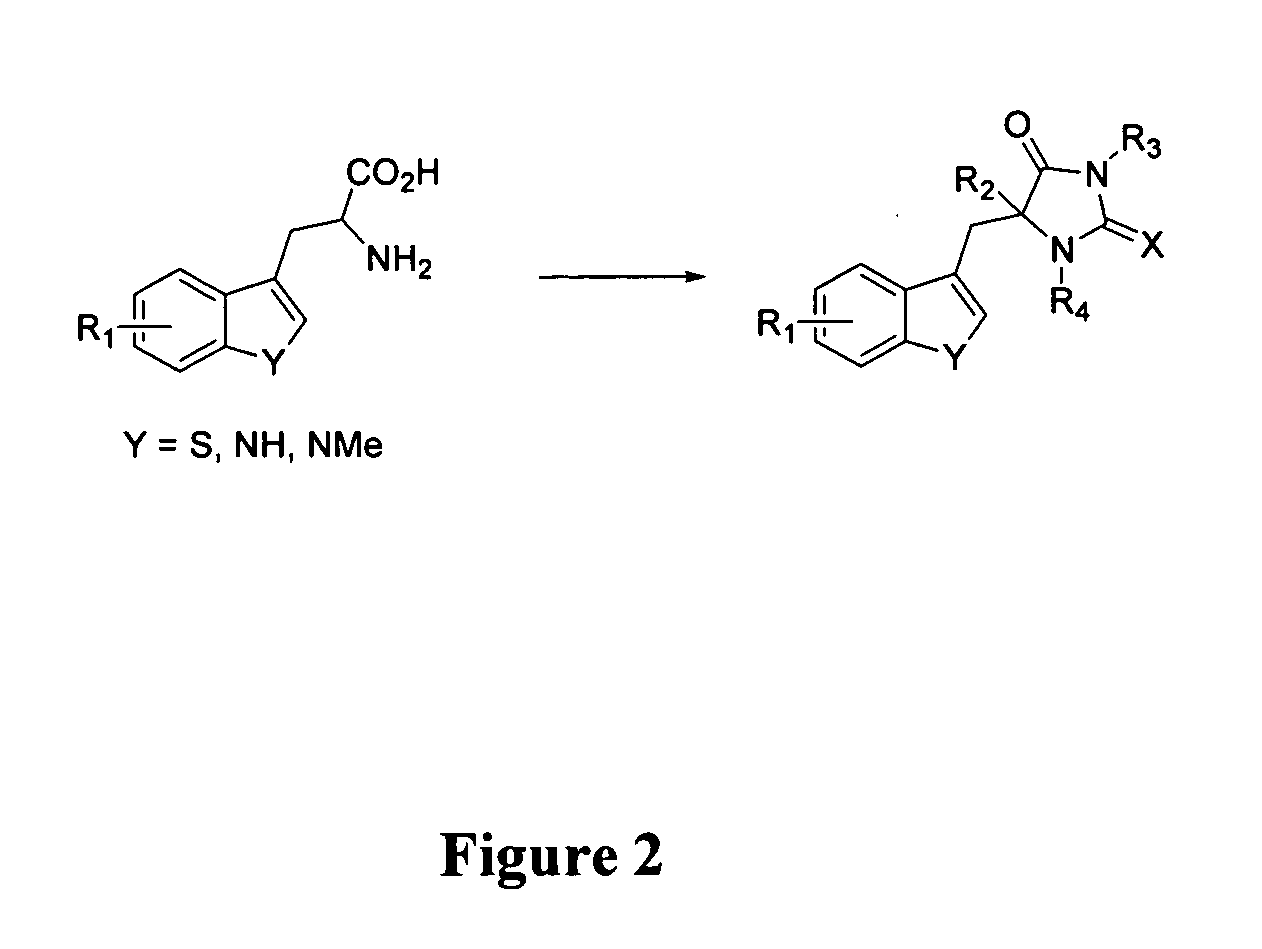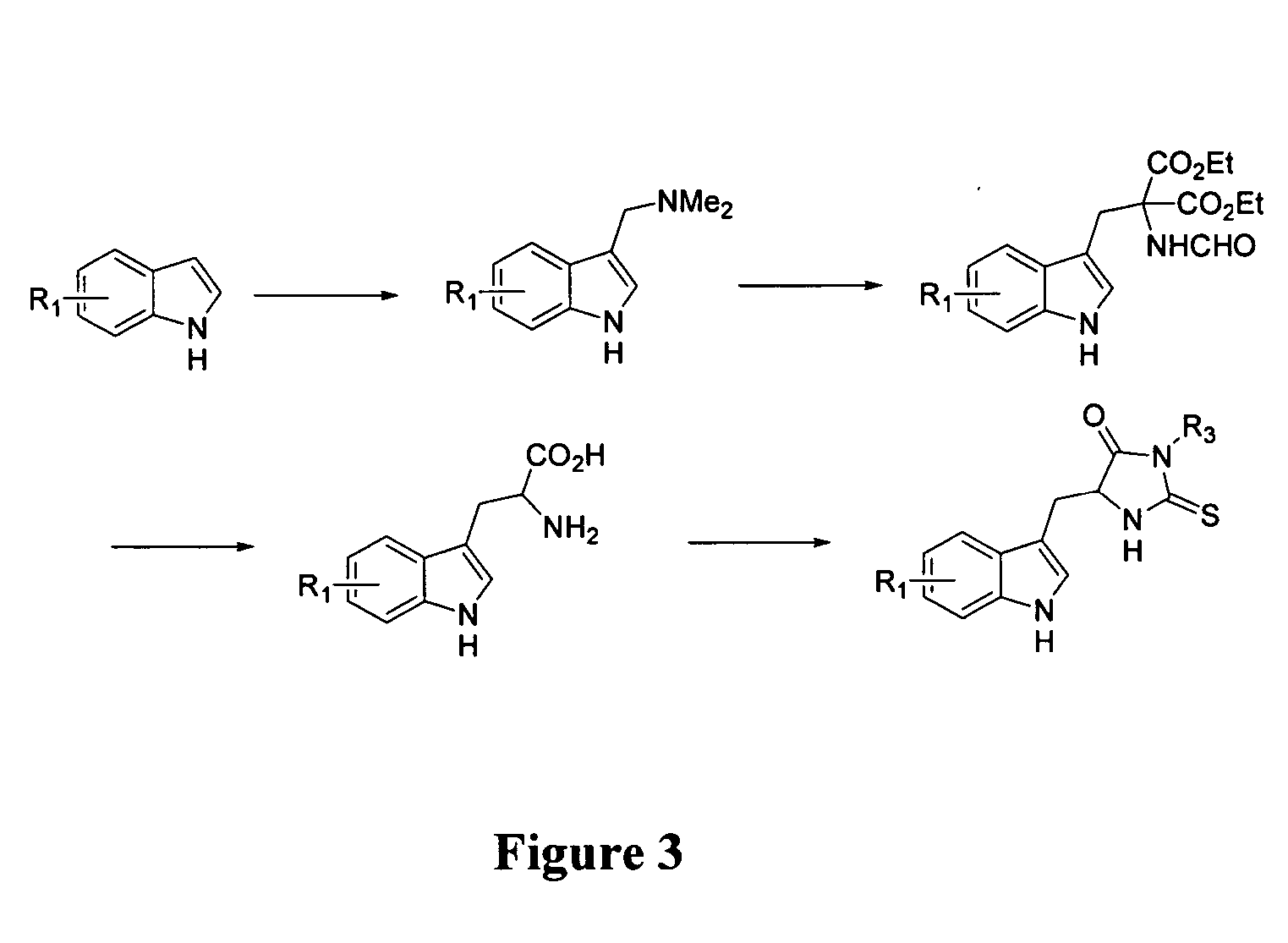Inhibitors of cellular necrosis
- Summary
- Abstract
- Description
- Claims
- Application Information
AI Technical Summary
Benefits of technology
Problems solved by technology
Method used
Image
Examples
example 1
Screening Assays Used to Identify Inhibitors of Cellular Necrosis
[0265] After a cell receives an initial assault either apoptotic, necrotic, or both apoptotic and necrotic mechanisms of cell death may be activated. The present example focuses on the necrosis pathway. Several chemical assaults were used to induce cell death, including exposure to tumor necrosis factor alpha (TNF-α), Fas ligand or β-amyloid protein. Various cell types were also used, including human neuroblastoma cells (SH-SY5Y) and human Jurkat T cells. In order to block the apoptosis mechanism, a general caspase inhibitor, N-benzyloxycarbonyl-valine-alanine-aspartic acid-(OMe) fluoromethyl ketone (zVAD, Polyerino, A. J.; Patterson, S. D. J. Biol. Chem. 1997, 272, 7013-7021), was used. This compound inhibits all caspases and consequently disrupts the apoptosis pathway. Resulting cell death occurs by a necrosis-like mechanism (Holler, N., et al. Nature Immunol. 2000, 1, 489-495; Kawahara, A., et al. J. Cell Biol. 199...
example 2
Preparation of 2-chloro-4-methanesulfonyl-6-trimethylsilanylethynyl-phenylamine
[0274]
[0275] To a solution of 2-chloro-4-methanesulfonylaniline (822.6 mg, 4.0 mmol.) in dichloromethane (10 mL) were added, under argon, bis(pyridine)iodinium tetrafluoroborate (2.970 gm, 8 mmol.) and trifluoromethanesulfonic acid (2.40 g, 16 mmol.). The reaction mixture stirred at room temperature for ˜16 h. It was diluted with water, and extracted in dichloromethane, dried and concentrated. The residue was purified on the column using 0 to 40% ethyl acetate-hexane to give 2-chloro-6-iodo-4-methanesulfonylaniline (969 mg, 73%): 1H NMR (500 MHz, CDCl3): 3.03 (s, 3H), 5.12 (s, 2H), 7.81 (s, 1H), 8.09 (s, 1H).
[0276] To the suspension of 2-chloro-6-iodo-4-methanesulfonylaniline (886.9 mg, 2.7 mmol.), Pd(PPh3)2Cl2 (94.5 mg, 0.13 mmol), and CuI (24.3 mg, 0.13 mmol.) was added triethyl amine (2 mL), and the suspension was slowly treated with (trimethylsilyl)acetylene (0.22 mL, 0.16 mmol.) at 0° C. The reacti...
example 3
Preparation of 7-Chloro-4-methanesulfonyl-1H-indole
[0277]
[0278] To a mixture of 2-chloro-4-methanesulfonyl-6-trimethylsilanylethynyl-phenylamine (100 mg, 0.33 mmol.) and CuI (126.2 mg, 0.66 mmol.), DMF (2 mL) under argon was added and the reaction mixture was heated at 100° C. for 2 hr. The reaction mixture was diluted with ethyl acetate and filtered through Celite. The filtrate was washed with saturated NaCl, dried and concentrated. The residue was purified by column chromatography on silica gel using 30% ethyl acetate-hexane to give 7-Chloro-4-methanesulfonyl-1H-indole (38 mg, 50%): mp 160-162° C., 1H NMR (500 MHz, CDCl3): 3.09 (s, 3H), 6.75 (m, 1H), 7.43 (m, 1H), 7.75 (d, J=2.5 Hz, 1H), 8.19 (d, J=2.5 Hz, 1H), 8.84 (s, 1H).
PUM
| Property | Measurement | Unit |
|---|---|---|
| total volume | aaaaa | aaaaa |
| total volume | aaaaa | aaaaa |
| total volume | aaaaa | aaaaa |
Abstract
Description
Claims
Application Information
 Login to View More
Login to View More - Generate Ideas
- Intellectual Property
- Life Sciences
- Materials
- Tech Scout
- Unparalleled Data Quality
- Higher Quality Content
- 60% Fewer Hallucinations
Browse by: Latest US Patents, China's latest patents, Technical Efficacy Thesaurus, Application Domain, Technology Topic, Popular Technical Reports.
© 2025 PatSnap. All rights reserved.Legal|Privacy policy|Modern Slavery Act Transparency Statement|Sitemap|About US| Contact US: help@patsnap.com



